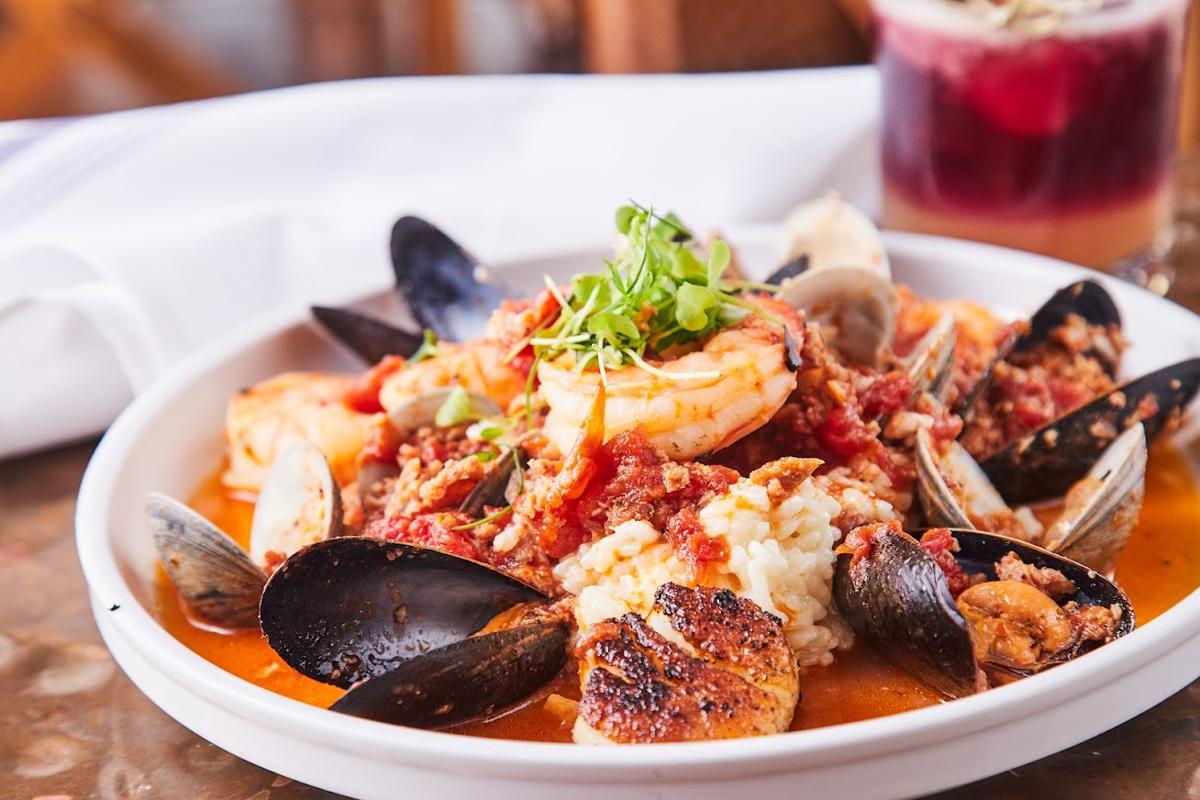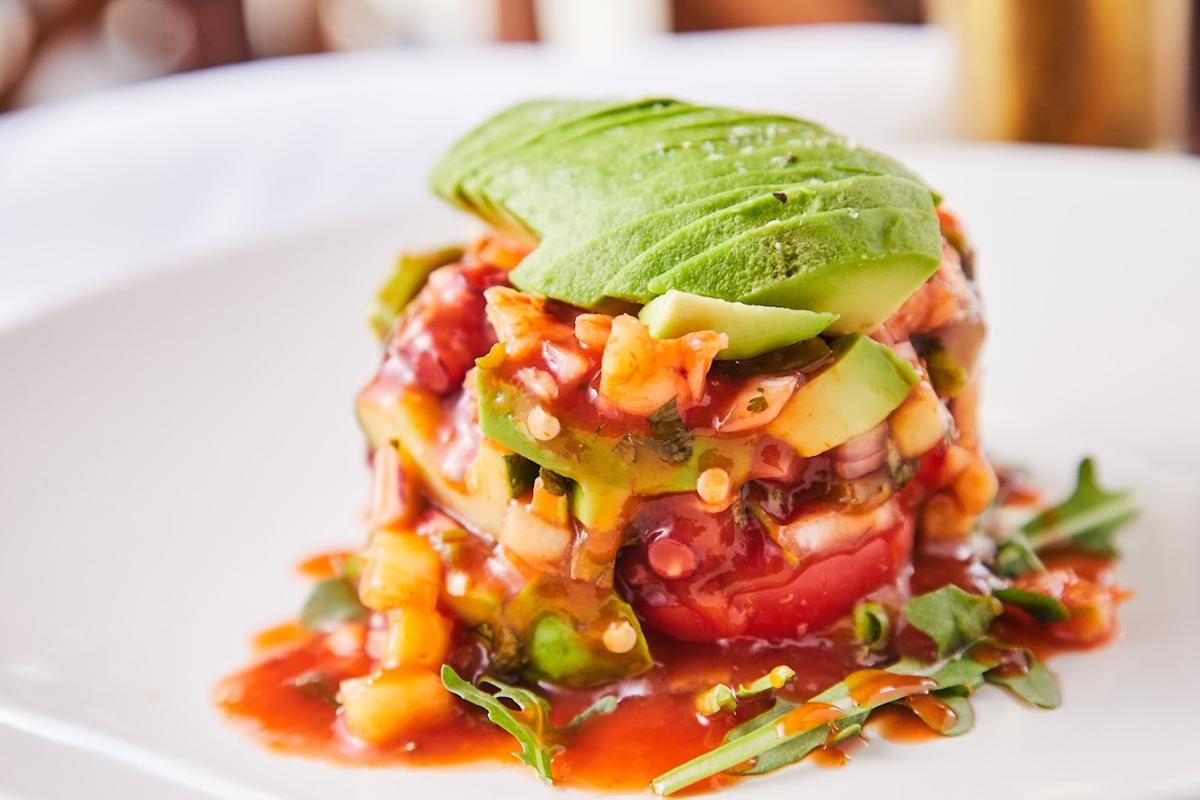Ariano
Hello & Welcome
Ariano is more than just a restaurant; it is a second home and a tribute to family and their legacy. The restaurant is named after Ariano Irpino, a town in the Campania region of Italy, where my family is from. Everything you see in the restaurant is dedicated to my family's history, their journey to America, the sacrifices they made, and the life they have created.
Many of the menu items display the names of the people who are important to our story; you can see my family members who were born in Ariano depicted in the ceiling mural over the second floor, amid the beautiful landscapes of Ariano. Two dishes on the menu mark the milestones in this journey: Buona Fortuna which means "good luck", is named for the start of our venture, and Finalmente is named for the day we "finally" opened our doors.
Builders by trade, my family and I built this place with our own hands. Every detail is dear to our hearts including the purchase of this property which was completed on a significant date: the birthday of my beloved late aunt, Zia Rosa. I was inspired to create a place where you come in as a customer but leave as a family member. Of course, this takes time, effort, and care.
From the roads of Italy to the rolling hills of Pennsylvania, this is my family history: The very first Bellapigna was my great grandfather, BisNonno Nicola. He was given what became our family name at the orphanage where he was raised and eventually met his wife, my great grandmother, Mama Giusepina. In the early 1900s, BisNonno Nicola spent a few years on the Pennsylvania railroad construction, earning money to buy property in his hometown of Ariano. Upon his return to Italy, he did very well for himself, but his foresight and his love for America resulted in a decision to send back his oldest son, Zi-Tone. Before Zi-Tone left Italia to cross the ocean to America, his father gave the boy this mission:
Always remember your family and if something happens to them in Italy, bring them to America. The year was 1911 and Zi-Tone was only 13 years old. He had a long road ahead of him from Ellis Island to Philadelphia and did not return to Italy again for four decades.
Following his departure from Ariano, Zi Tone's younger brother was born. He was my grandfather and his name is Nonno Michele. Nonno Michele grew up to be a professional cyclist and participated in bicycle races all over Italy, until a bizarre accident. In a strange and sad turn of events, Nonno Michele's career was brought to an end by a daydreaming pig that decided to cross the road just as the cyclist was whizzing down the hill. At the same time, World War II erupted, and the skies came crashing down on our family. Nonno Michele was captured during the fighting and spent ten years as a POW. The property for which BisNonno Nicola had worked so hard in America was lost, and the family became destitute living on someone else's land, in a tiny earthen grotto with animals.
Finally, when Nonno Michele returned home after the war, he had changed so much that even his own daughter did not recognize him. As he walked down the road called Via Ottagio, he asked a young girl to point out "la casa di Bellapigna" (the house of the Bellapignas). She showed him a direction and said, "My house is over there." Only then did he realize that he was talking to his oldest child, Pippenela.
The first order of business for Nonno Michele was to build his family a proper home. It is at that time my family began its tradition of working in the building trades, which still continues today.
Nonno Michele had four children: Zia Pippenela, Zio Nicola, Otino (my father), and Zio Luciano. When his youngest daughter, Zia Rosa, was born the family was complete. Though the post-war years were hard, they were filled with the everyday business of survival, raising children, life, and love. By 1951, my father had turned 13 and was officially a teenager herding sheep and occasionally disregarding other people's property boundaries. Of course, many times he was caught, and on one particular occasion, a property owner's daughter discovered him wandering on their land. This 13-year-old girl began throwing rocks at the sheep herding boy and he threw them back at her. Inadvertently, he threw one of those pebbles at a nearby woman and blamed the young girl. A passionate fight ensued and strangely enough, this is how Otino Bellapigna met Francesca Cardinale, my mother. They fell in love, but it did take some ingenuity for them to keep seeing each other. My father had a black sheep in his herd and my mother's parents (Nonno Angelo Maria and Nonna Antonieta) could always tell when Otino was coming over the hill to see her. This was one of his creative ways to see Francesca behind her parents' backs (which is why her parents are depicted in the mural with their backs turned). Despite his techniques to see Francesca, when Otino asked for her hand in marriage, her parents blessed them both. They are now married for over 50 years and even though the rock throwing is over, their passion for each other still exists.
It is around this time in 1951, that the temporarily separated parts of our family were reunited. Zi-Tone, my grandfather's oldest brother who was sent to America at 13 years of age, returned to Italy after two wars 40 years later. He found the family he had never met living in extreme poverty in the aftermath of a worldwide disaster. This was exactly the mission his father had given him which he had not forgotten. Zi-Tone began years of hard work to fulfill his mission, and by 1959 he had brought almost all of the family to America.
This is the point where our Italian history joined our American history, and you can see in the ceiling mural a reminder of one of his stories, both heartbreaking and wonderful. In the 1920s, Zi-Tone experienced sudden blindness; another neighbor was also blinded at the same time. Though terrified, the two families felt heartened to raise money for a statue of St. Lucy, who is the patron saint of blindness. The statue would be their neighborhood church, Our Lady of Loreto (Signora Loreto). In the midst of that effort, Zi-Tone regained his eyesight and believed it was a miracle. While his neighbor's sight never returned, their family's miracle continues in its own way: his grandson is now a well-known eye surgeon, Dr. Dellavecchia. The Dellavecchias are still good friends of our family.
In 1959, when the last of the Bellapigna immigrants made their way across the ocean, there was still a long way for them to travel before they would make the family what it is today. We owe a lot of that to one of my favorite people, my father's youngest sister, our Zia Rosa. She spent part of her childhood living with her aunt, Nonno Michele's sister, Zia Ernestina, who had become a nun and taken over the same orphanage that had brought up her parents. Living at the convent and going to the school run by the nuns at the orphanage gave Rosa an excellent education. When she came to America at 11 years old, she did not speak a word of English, yet by the end of that year, she was tutoring other students in her class. Zia Rosa did not live a long life; she became ill and died when she was only 35. She grew up, married, took the family name of Vinciguerra, and raised three children. An amazing person in every way, what Zia Rosa gave us was love and inspiration. Her beauty is of the kind that isn't frozen in the past, but lives and blossoms into the future in everything and everyone she's touched, and generations after. This building is dedicated to Zia Rosa; she is the only member of the family present on all four walls of the mural. The inscription in the mural over the "third-floor" platform reads:
Per la nostra Zia Rosa, tuo spirito vive oggi e sempre con tutta la famigla "To our Aunt Rosa, your spirit lives today, & always with the family"


